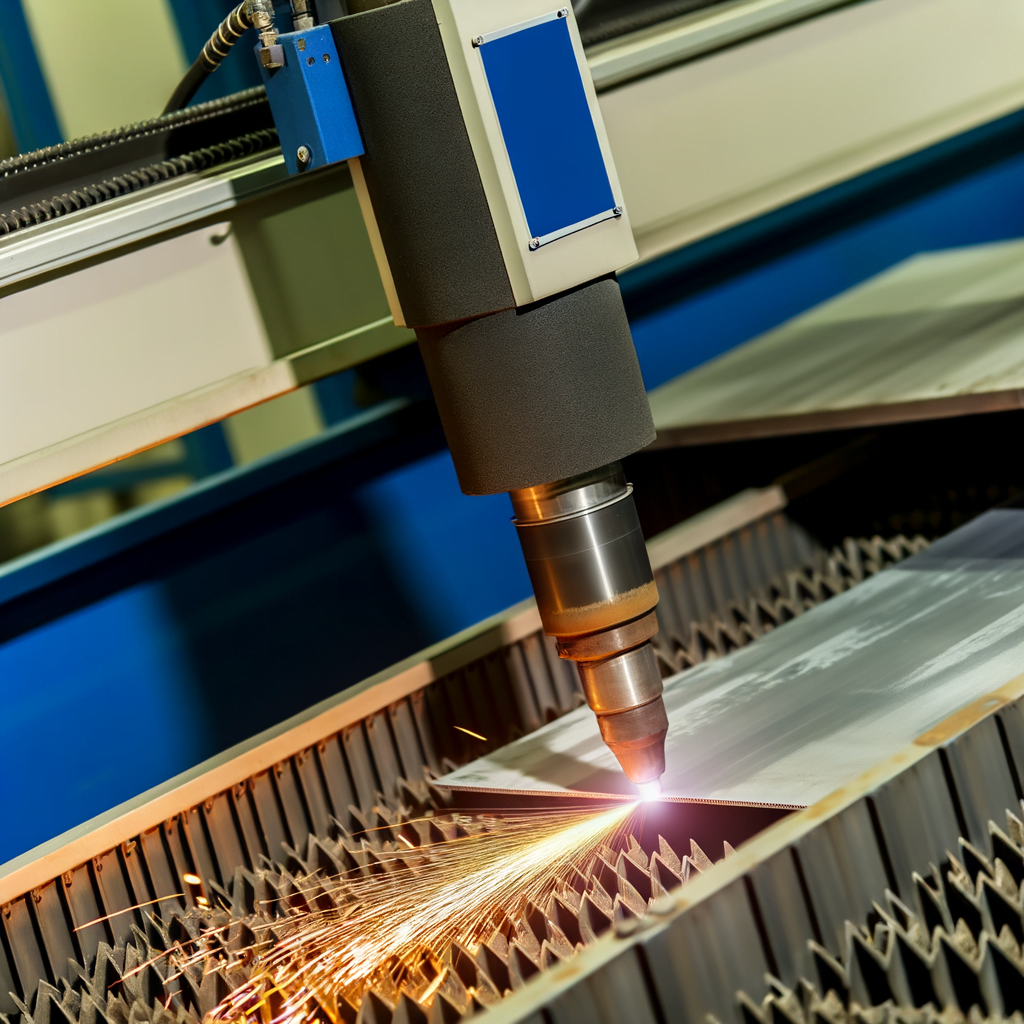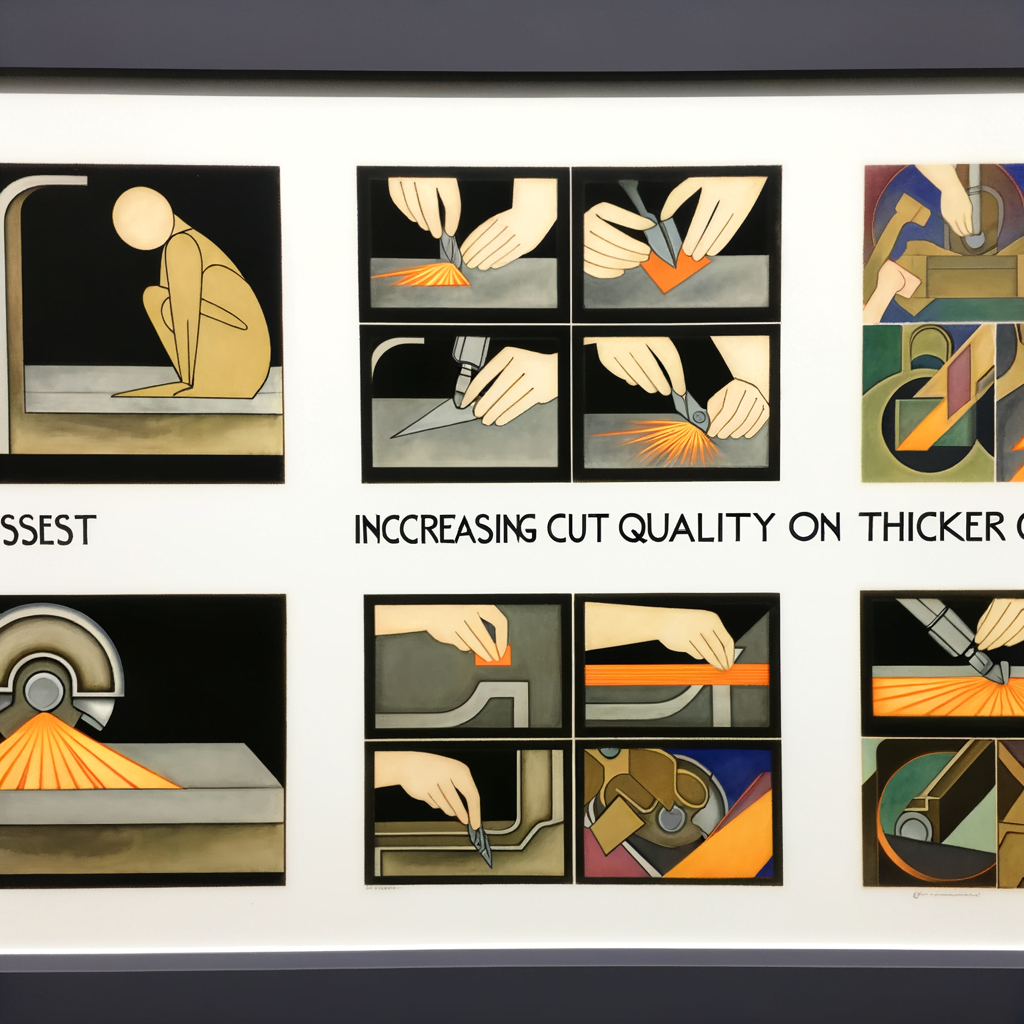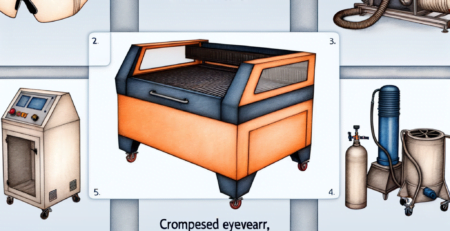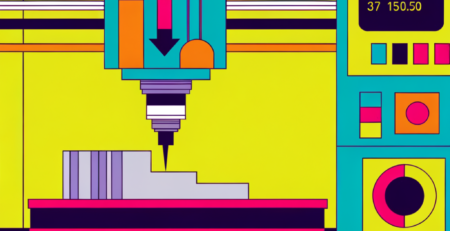Increasing Cut Quality on Thicker Metals with Your CNC Plasma Cutter
Sommario
“Maximize Precision, Minimize Effort: Elevate Your CNC Plasma Cutting on Thicker Metals”
introduzione
Increasing cut quality on thicker metals with a CNC plasma cutter involves optimizing various parameters and techniques to achieve precise, clean cuts. Factors such as power settings, cutting speed, choice of consumables, and gas selection play critical roles in the cutting process. By carefully calibrating these elements, operators can minimize dross and edge bevel while enhancing the overall appearance and dimensional accuracy of the cut. Additionally, implementing proper maintenance routines for the CNC plasma cutter and employing advanced technologies like height control and software optimization can further improve cut quality on thicker metal workpieces.
Optimizing CNC Plasma Cutter Settings for Enhanced Cut Quality on Thick Metals
Increasing Cut Quality on Thicker Metals with Your CNC Plasma Cutter
CNC plasma cutting is a powerful and versatile method for slicing through metal materials with precision and speed. However, when it comes to cutting thicker metals, operators may encounter challenges that can affect the quality of the cut. Achieving a clean, precise cut on thicker materials requires a deeper understanding of the machine’s capabilities and the optimization of various settings. By fine-tuning these parameters, operators can significantly enhance the cut quality, reduce waste, and improve overall efficiency.
One of the primary factors influencing cut quality in thicker metals is the amperage setting of the plasma cutter. Higher amperage is necessary to penetrate greater thicknesses, but it must be carefully balanced. Too much power can lead to excessive dross and a wider kerf, while insufficient power may result in incomplete cuts or the need for multiple passes. It is crucial to consult the manufacturer’s specifications and recommendations to determine the optimal amperage for the specific thickness and type of metal being cut.
In addition to amperage, the cutting speed plays a pivotal role in the outcome. A speed that is too fast can lead to unclean cuts and a lack of penetration, whereas a speed that is too slow can cause excessive heat buildup, resulting in a wider kerf and more dross. Finding the right balance is key, and it often involves a process of trial and error. Operators should start with the recommended settings and make incremental adjustments based on the quality of the initial cuts.
Another aspect to consider is the choice of consumables. Using the correct type and size of nozzle, electrode, and shield is essential for maintaining the integrity of the plasma arc and achieving a high-quality cut. Consumables that are worn or not suited for the thickness of the metal can degrade the cut quality. Regular inspection and timely replacement of these components will ensure that the plasma cutter operates at peak performance.
The height of the torch above the workpiece, known as the standoff distance, also affects the cut quality. An optimal standoff distance allows the plasma arc to fully penetrate the metal without causing excessive damage to the surrounding area. CNC plasma cutters typically have automatic height control systems that adjust the torch height in real-time, but it is important to ensure that these systems are calibrated correctly for the material being cut.
Furthermore, the use of proper cutting techniques, such as preheating the metal and employing a lead-in and lead-out strategy, can minimize the potential for hardening at the cut edges and reduce the likelihood of warping. Preheating is particularly beneficial for thicker metals, as it can help to achieve a more consistent cut by reducing the temperature gradient through the material.
Lastly, maintaining a clean and stable work environment is essential. Dust, rust, and other contaminants can interfere with the plasma arc and diminish cut quality. Ensuring that the workpiece is clean and properly grounded will help to maintain a stable arc and reduce the chances of defects.
In conclusion, optimizing a CNC plasma cutter for cutting thicker metals involves a careful balance of machine settings, consumable selection, and cutting techniques. By paying close attention to amperage, cutting speed, torch height, and the condition of consumables, operators can significantly improve the cut quality on thicker materials. Regular maintenance and a clean work environment further contribute to achieving the best possible results. With these considerations in mind, operators can confidently tackle the challenges of cutting thick metals and produce clean, precise cuts every time.
The Role of Gas Selection and Control in Improving Thick Metal Cutting with CNC Plasma Systems

Title: Increasing Cut Quality on Thicker Metals with Your CNC Plasma Cutter
In the realm of metal fabrication, the ability to precisely cut through thick metals is a coveted skill, often determining the efficiency and quality of the final product. CNC plasma cutting systems have revolutionized this process, offering unparalleled speed and precision. However, when it comes to slicing through thicker materials, several challenges arise that can affect the cut quality. One of the most critical factors in overcoming these challenges is the selection and control of the plasma gas used during the cutting process.
The choice of gas in CNC plasma cutting is not merely a matter of availability or cost; it is a strategic decision that directly impacts the cut quality, especially in thicker metals. Different gases produce varying results in terms of edge quality, speed, and dross levels. For instance, using oxygen as the plasma gas can result in a faster cutting speed and a cleaner edge on mild steel, but it may not be the best choice for thicker materials or for other types of metals like aluminum or stainless steel.
Conversely, when cutting stainless steel or aluminum, especially at greater thicknesses, gases like nitrogen or a mixture of nitrogen and hydrogen can be more effective. These gases can provide a balance between cut quality and speed, reducing the amount of dross and minimizing the heat-affected zone. This is crucial because excessive heat can lead to warping or changes in the material properties, which are particularly problematic in thicker metal sections.
Moreover, the control of the gas pressure and flow rate is equally important as the type of gas used. Precise control ensures that the plasma arc is stable and concentrated, which is essential for maintaining a consistent cutting quality throughout the process. An arc that is too diffuse can cause a wider kerf and more dross, while an overly focused arc can lead to excessive wear on consumables and potential damage to the material.
Advanced CNC plasma systems come equipped with sophisticated gas control technology that allows operators to fine-tune the gas parameters for each job. This level of control is particularly beneficial when working with thicker metals, as it enables the operator to adjust the gas flow to compensate for the increased material resistance. By optimizing these settings, the plasma cutter can achieve a smoother edge, a narrower kerf, and a more precise cut overall.
Furthermore, the integration of modern software with CNC plasma systems has made it easier to manage these variables. Operators can now input the material type and thickness, and the software can automatically adjust the gas type, pressure, and flow rate to match the requirements. This automation not only saves time but also reduces the likelihood of human error, ensuring consistent quality even in complex or repetitive cutting tasks.
In conclusion, the role of gas selection and control in CNC plasma cutting cannot be overstated, particularly when dealing with thicker metals. The right combination of gas type and precise control of gas parameters can significantly enhance the cut quality, leading to better product outcomes and increased satisfaction for both fabricators and their clients. As technology continues to advance, the capabilities of CNC plasma systems will expand, further empowering operators to tackle the challenges of thick metal cutting with confidence and finesse.
Advanced Techniques for Maintaining Precision in Thick Metal Cuts with CNC Plasma Cutters
Increasing Cut Quality on Thicker Metals with Your CNC Plasma Cutter
CNC plasma cutting is a powerful and versatile method for slicing through metal materials with precision and speed. However, as the thickness of the metal increases, maintaining a high cut quality can become more challenging. Advanced techniques are essential for ensuring that cuts in thick metal are precise, clean, and require minimal post-processing. By understanding and implementing these strategies, operators can significantly enhance the performance of their CNC plasma cutters when dealing with robust materials.
One of the primary considerations when cutting thicker metals is the selection of the appropriate consumables. The nozzle, electrode, and shield all play critical roles in the plasma cutting process, and using the right combination can make a substantial difference in cut quality. For instance, a nozzle with a larger orifice and a corresponding electrode can provide a wider plasma arc capable of cutting through thicker materials more effectively. Additionally, a shield that helps focus the plasma stream can reduce kerf width and improve the precision of the cut.
Another technique to improve cut quality is to optimize the cutting speed. While faster speeds can increase productivity, they may not always yield the best results on thicker materials. Slowing down the cutting speed allows the plasma arc to fully penetrate the metal, ensuring a cleaner cut with less dross or slag formation. However, it’s crucial to find a balance, as too slow a speed can lead to excessive heat buildup, warping the material, and diminishing cut quality.
Control of the torch height is also vital when cutting thicker metals. The distance between the torch and the workpiece affects the arc voltage and, consequently, the quality of the cut. Maintaining the correct torch height prevents the arc from stretching, which can cause a wider kerf and more bevel on the cut edge. Modern CNC plasma cutters often come equipped with automatic height control systems that adjust the torch height in real-time, compensating for any variations in the material’s surface.
Piercing techniques should be carefully considered as well. When initiating a cut, the high-intensity plasma can cause damage to the surface of thicker metals if not done correctly. A common method to avoid this is to use a ramping or edge start technique, where the torch begins the cut from the edge of the material or gradually ramps up the power to pierce the metal away from the final cut path. This approach minimizes the potential for blowback and damage to the workpiece and consumables.
Furthermore, the use of a water table or underwater cutting can significantly improve cut quality on thicker metals. Submerging the material or using a water table helps to cool the metal quickly, reducing thermal distortion and the formation of a hardened edge, known as a heat-affected zone (HAZ). This technique also suppresses fumes and noise, creating a safer and more pleasant working environment.
Lastly, post-processing should not be overlooked. Even with the best cutting practices, some finishing may be required to achieve the desired quality. Techniques such as grinding or machining can remove any remaining dross and refine the edge quality. However, with careful attention to the cutting process, the need for extensive post-processing can be greatly reduced.
In conclusion, increasing cut quality on thicker metals with a CNC plasma cutter involves a combination of selecting the right consumables, optimizing cutting parameters, controlling torch height, employing smart piercing techniques, and considering the benefits of water-assisted cutting. By mastering these advanced techniques, operators can ensure that their cuts are precise, clean, and efficient, even when working with the most challenging materials.
Conclusione
To increase cut quality on thicker metals with a CNC plasma cutter, it is essential to optimize several key parameters and equipment choices. These include selecting the appropriate plasma torch and consumables, adjusting the cutting speed and amperage, ensuring proper torch height control, maintaining a stable and clean work environment, and using a high-quality air supply. Additionally, implementing advanced technologies such as high-definition plasma systems can significantly improve edge quality and precision. Regular maintenance of the CNC plasma cutter and training for operators to understand the nuances of cutting thicker materials are also crucial for achieving the best cut quality. By carefully managing these factors, operators can enhance the performance of their CNC plasma cutter and produce cleaner, more precise cuts on thicker metals.





Lascia un commento